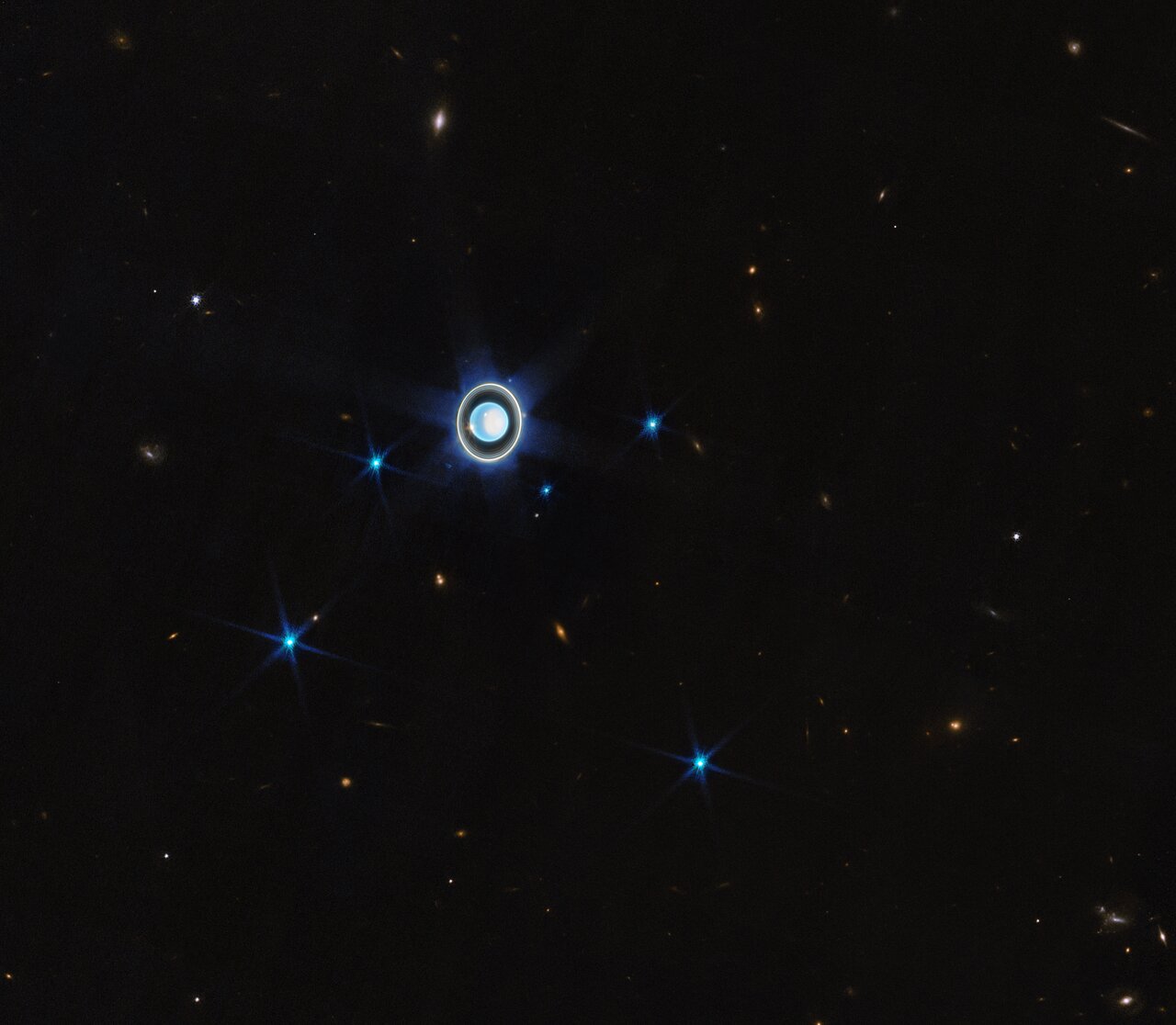The James Webb Space Telescope keeps on delivering out-of-this-world images of our solar system. Just six months after it captured striking images of Neptune and its rings, the telescope has some new photos of Neptune’s planetary neighbor Uranus. And, once again, the telescope gave scientists something unexpected: a clear image of Uranus’ rings!
NASA shared the latest image of Uranus, which the agency refers to as our solar system’s “other ice giant” (along with Neptune) on its Twitter account in early April.
Uranus has never looked better. Really.
Only Voyager 2 and Keck (with adaptive optics) have imaged the planet's faintest rings before, and never as clearly as Webb’s first glimpse at this ice giant, which also highlights bright atmospheric features. https://t.co/aE3rJIqVKy pic.twitter.com/RZElIRkudl
— NASA Webb Telescope (@NASAWebb) April 6, 2023
The social media post highlighted the photo’s rarity, both in quality and quantity. Previously, only two other photos have shown the planet’s rings.
The first came from the spacecraft Voyager 2 back in January 1986, according to NASA’s Jet Propulsion Laboratory. During its time in Uranus’ orbit, Voyager 2 transmitted thousands of images that showcased two new rings and 11 new moons orbiting the planet.
Next came images from the Keck Observatory in Hawaii with its high-tech telescopes in 2004. According to scientists from the observatory, the astronomers were able to use “advances in Keck adaptive optics to help make major scientific discoveries regarding the planet’s atmosphere and ring system.”
But, even with the best technology of the time, those images of Uranus’ rings cannot compare with the ones from James Webb Space Telescope.
One of the photos released by NASA provides a zoomed-out look at the planet surrounded by six of its known 27 moons.

Astronomer Stefanie Milam called the new photos “breathtaking” in a video posted on the Museum of Science Twitter account.
“The first time I saw this image, it was absolutely emotional,” she said.
“Breathtaking” new images of Uranus just released from the @NASAWebb telescope show its rings more clearly than we’ve ever seen. #JWST scientist @SNMilam on why this image hit home for her
pic.twitter.com/KvqqeDz5vG
— Museum of Science (@museumofscience) April 7, 2023
What makes Uranus’ rings hard to see, according to Milam and other astronomers, is their composition of ice and dust. The images sent from the Webb telescope use a combination of infrared camera filters to provide the clearest images of the planet’s rings ever seen.
Still, even with infrared technology, only 11 of Uranus’ 13 known rings can be seen in these images, according to a press release from ESAWebb.org.
This story originally appeared on Simplemost. Check out Simplemost for additional stories.


